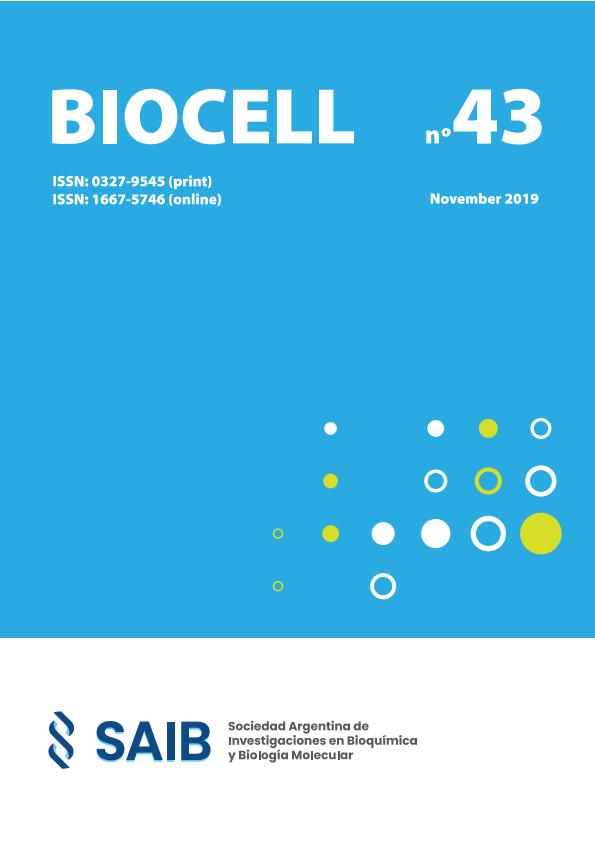Evento
The flight response induces the release of an ILP from the intestine to inhibit cytoprotective mechanisms in C. Elegans
Tipo del evento:
Congreso
Nombre del evento:
Congreso de la Sociedad Argentina de Investigaciones en Bioquímica y Biología Molecular
Fecha del evento:
05/11/2019
Institución Organizadora:
Sociedad Argentina de Investigaciones en Bioquímica y Biología Molecular;
Panamerican Association for Biochemistry and Molecular Biology;
Título de la revista:
Biocell
Editorial:
Sociedad Argentina de Investigaciones en Bioquímica y Biología Molecular (SAIB).
e-ISSN:
1667-5746
Idioma:
Inglés
Clasificación temática:
Resumen
The perpetuation of the flight response inhibits defensive cytoprotective mechanisms, leading to reduced resistance to environmental stressors, early onset of age-related disorders and shorter lifespan from invertebrates to mammals. We have recently shown that, in Caenorhabditis elegans, the flight response induces the neuronal release of Tyramine (TA, the invertebrate analog of adrenaline), which stimulates the adrenergic-like receptor TYRA-3 in the intestine. This leads to the activation of the DAF-2/Insulin/IGF-1 pathway and the inhibition of cytoprotective mechanisms, such as translocation of DAF-16/FOXO or HSF-1, not only in the intestine but also in other tissues. However, the signals that bridge the stimulation of TYRA-3 in the intestine with the activation of the DAF-2 insulin receptor in other tissues remain unknown. C. elegans genome encodes 40 Insulin-like peptides (ILPs), which in principle could bind to DAF-2, and many of them are expressed in the intestine. We, therefore, used RNAi to individually silence intestinal ILPs and test the resistance to environmental stressors such as oxidative and thermal stress. We found that the silencing of one of those ILPS, ins-3, improves the resistance to environmental stressors. In contrast to control, the addition of exogenous TA does not impair the oxidative or thermal stress resistance in ins-3-silenced animals. Moreover, we generated double null mutants of ins-3 and TAdeficient mutants and found that this double mutant is as resistant to environmental stress as single mutants. This suggests that tyramine and INS3 act in the same pathway to control stress resistance. Since ins-3 is also expressed in neurons, we injected ins-3 cDNA driven by intestinal and neuronal promoters to ins-3 null mutant animals, to assess the tissue where the expression of ins-3 is relevant for controlling stress resistance. We found that only intestinal expression of ins-3 restores the resistance to wild-type levels. Moreover, we found that the stress resistance of ins-3 null mutants is mediated, at least partially, by DAF-16/FOXO. We, therefore, propose that the activation of the intestinal GPCR TYRA-3 by the escape neurohormone TA leads to the release of INS-3 which acts as endocrine, autocrine and/or paracrine signal to activate the insulin receptor DAF-2 not only in the intestine but also in distal tissues. Given the high degree of conservation of fundamental mechanisms among species, this study can contribute to understanding molecular pathways and cellular communication involved in neural regulation of stress response in multicellular organisms.
Palabras clave:
INSULIN
,
STRESS
,
C.ELEGANS
,
LIFESPAN
Archivos asociados
Licencia
Identificadores
Colecciones
Eventos(INIBIBB)
Eventos de INST.DE INVEST.BIOQUIMICAS BAHIA BLANCA (I)
Eventos de INST.DE INVEST.BIOQUIMICAS BAHIA BLANCA (I)
Citación
The flight response induces the release of an ILP from the intestine to inhibit cytoprotective mechanisms in C. Elegans; Congreso de la Sociedad Argentina de Investigaciones en Bioquímica y Biología Molecular; Salta; Argentina; 2019; 50-51
Compartir




